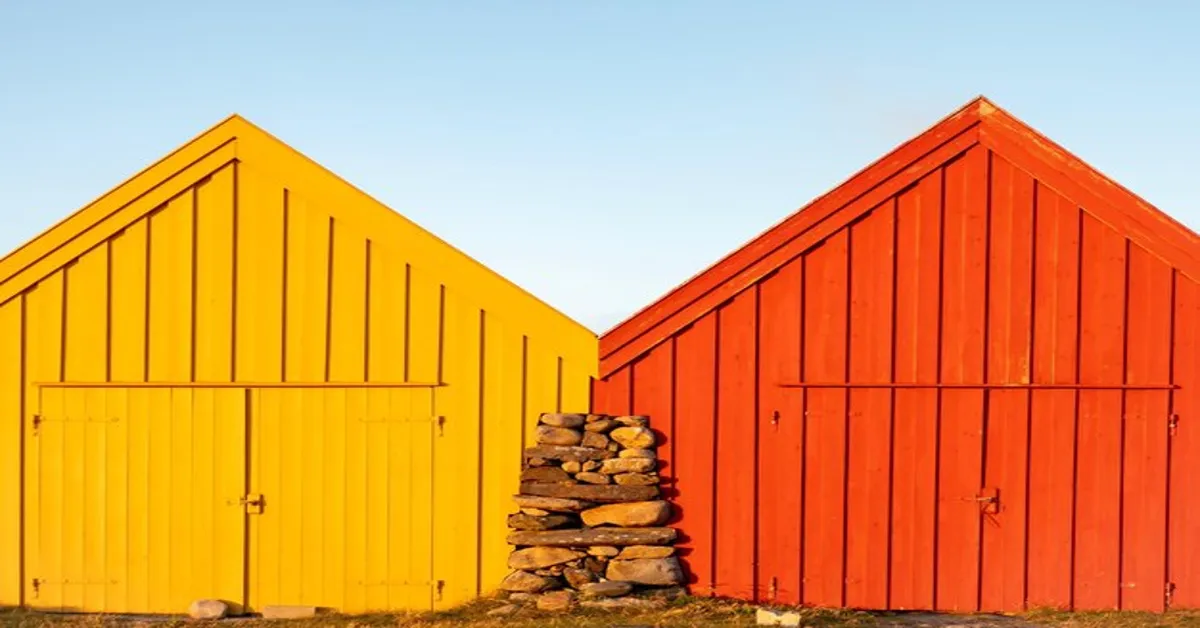Board and batten siding has been a popular choice for home exteriors for centuries. Originally used in barns and rural buildings, it has since evolved into a stylish and durable siding option for modern homes. This classic design features alternating wide boards and narrow battens, creating a distinctive vertical pattern that adds depth and texture to any exterior.
If you’re considering board and batten siding, this guide will walk you through its benefits, material options, installation process, costs, and maintenance tips.
What is Board and Batten Siding?
Board and batten siding is a type of vertical siding that consists of wide boards spaced apart with narrow strips (battens) covering the seams. This creates a layered look that enhances the architectural appeal of homes.
Traditionally used in barns and farmhouses, board and batten siding has gained popularity in contemporary home designs due to its rustic charm, durability, and ability to suit a variety of aesthetics.
Benefits of Board and Batten Siding
Choosing board and batten siding offers several advantages:
1. Timeless Aesthetic Appeal
- Creates a rustic yet modern look suitable for farmhouse, craftsman, and contemporary homes.
- The vertical lines add height and visual interest to a building’s exterior.
2. Durability and Strength
- When made from quality materials, board and batten siding can withstand harsh weather conditions.
- Offers excellent insulation when properly installed.
3. Versatile Design Options
- Works well with different architectural styles.
- Can be painted or stained in various colors to match different design preferences.
4. Low Maintenance
- Requires minimal upkeep, especially when using materials like vinyl or fiber cement.
- Resistant to rot, warping, and pests (depending on the material chosen).
Types of Materials for Board and Batten Siding
There are several material options available for board and batten siding, each with unique pros and cons.
1. Wood
- Classic and traditional choice.
- Offers a natural aesthetic but requires regular maintenance (sealing and staining).
- Common types: Cedar, pine, and redwood.
2. Vinyl
- Affordable and low maintenance.
- Resistant to moisture, rot, and insects.
- Available in various colors and textures but may not have the same authentic feel as real wood.
3. Fiber Cement
- Highly durable and weather-resistant.
- Mimics the appearance of wood without requiring frequent maintenance.
- Fire-resistant and pest-proof.
4. Metal
- Modern and industrial aesthetic.
- Extremely durable and resistant to fire, moisture, and pests.
- Higher upfront cost but long-lasting.
5. Composite
- Made from a blend of wood fibers and synthetic materials.
- Resistant to rot, insects, and moisture.
- Provides a natural look with reduced maintenance.
Board and Batten Siding Installation Process
Installing board and batten siding involves the following steps:
1. Preparation
- Measure the exterior walls to determine the amount of material needed.
- Clean and prep the surface for installation.
2. Installing the Boards
- Start by attaching wide vertical boards to the wall with nails or screws.
- Ensure consistent spacing between boards to allow for expansion and contraction.
3. Adding the Battens
- Place the narrow battens over the seams between the boards.
- Secure them with nails to create a watertight barrier.
4. Finishing Touches
- Seal the siding with paint or stain for enhanced durability.
- Add trim pieces around windows and doors for a polished look.
Cost of Board and Batten Siding
The cost of board and batten siding depends on the material used, labor costs, and the size of the project.
Average Costs by Material:
| Material | Cost per Square Foot |
|---|---|
| Wood | $4 – $12 |
| Vinyl | $2 – $7 |
| Fiber Cement | $5 – $10 |
| Metal | $7 – $15 |
| Composite | $6 – $12 |
Additional Cost Factors:
- Labor Costs: $2 – $5 per square foot.
- Prep Work: If removing old siding, additional labor costs may apply.
- Painting/Staining: An extra $1 – $4 per square foot.
Maintenance and Longevity
Proper maintenance extends the lifespan of board and batten siding:
- Wood: Requires sealing or staining every 3-5 years.
- Vinyl & Fiber Cement: Only occasional washing needed.
- Metal: Minimal maintenance; occasional repainting.
- Composite: Low-maintenance, occasional cleaning recommended.
Popular Board Siding Colors and Styles
Trending Colors:
- Classic white
- Charcoal gray
- Navy blue
- Earthy tones (beige, brown, sage green)
Style Variations:
- Traditional farmhouse
- Modern minimalist
- Two-tone color contrast for added depth
Final Thoughts
Board and batten siding is a beautiful and durable choice for homeowners seeking a timeless yet modern aesthetic. Whether you choose wood, vinyl, fiber cement, or metal, this siding option enhances curb appeal and provides lasting protection for your home.
If you’re considering a board and batten siding upgrade, consult a professional contractor to explore the best material and design for your home. Share this guide with others looking for exterior siding inspiration!
Frequently Asked Questions (FAQs)
1. Is board and batten siding energy-efficient?
Yes, when properly insulated, it provides excellent energy efficiency.
2. Can batten siding be installed over existing siding?
In some cases, yes, but it depends on the condition of the existing siding.
3. Does board and batten siding work for modern homes?
Absolutely! It’s versatile and works well with both traditional and contemporary designs.
4. How long does board and batten siding last?
With proper maintenance, it can last 20-50 years, depending on the material used.
5. Can I install board and batten siding myself?
Yes, but professional installation ensures longevity and proper sealing against moisture.









